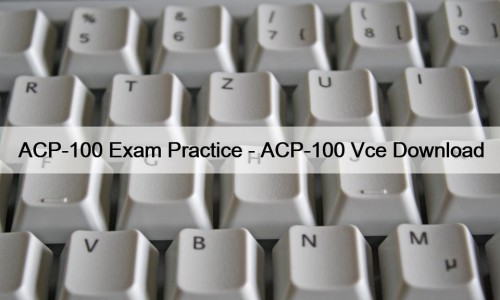Most Popular
 700-750 Latest Exam Discount | 700-750 Test Vce Free
700-750 Latest Exam Discount | 700-750 Test Vce Free
Whatever your professional, working towards a Cisco Small and Medium ...
 2025 Excellent 100% Free DEX-403–100% Free New APP Simulations | Test DEX-403 Price
2025 Excellent 100% Free DEX-403–100% Free New APP Simulations | Test DEX-403 Price
What's more, part of that RealExamFree DEX-403 dumps now are ...
 ACP-100 Exam Practice - ACP-100 Vce Download
ACP-100 Exam Practice - ACP-100 Vce Download
By using the ACP-100 desktop practice exam software, you can ...



New 1Z0-182 Test Online & 1Z0-182 Test Engine Version

DOWNLOAD the newest ITCertMagic 1Z0-182 PDF dumps from Cloud Storage for free: https://drive.google.com/open?id=1AhIzJHYbVV9eGDHmCCLS_Iffwya9jtVI
Our 1Z0-182 Study Materials are convenient for the clients to learn and they save a lot of time and energy for the clients. After the clients pay successfully for the 1Z0-182 study materials they can immediately receive our products in the form of mails in 5-10 minutes and then click on the links to use our software to learn. The clients only need 20-30 hours to learn and then they can attend the test. For those in-service office staff and the students who have to focus on their learning this is a good new because they have to commit themselves to the jobs and the learning and don’t have enough time to prepare for the test.
Oracle 1Z0-182 Exam Syllabus Topics:
| Topic | Details |
|---|---|
| Topic 1 |
|
| Topic 2 |
|
| Topic 3 |
|
| Topic 4 |
|
| Topic 5 |
|
| Topic 6 |
|
| Topic 7 |
|
| Topic 8 |
|
| Topic 9 |
|
| Topic 10 |
|
| Topic 11 |
|
| Topic 12 |
|
1Z0-182 Test Engine Version, Related 1Z0-182 Certifications
The Oracle Database 23ai Administration Associate (1Z0-182) is one of the popular exams of 1Z0-182. It is designed for Oracle aspirants who want to earn the Oracle Database 23ai Administration Associate (1Z0-182) certification and validate their skills. The 1Z0-182 test is not an easy exam to crack. It requires dedication and a lot of hard work. You need to prepare well to clear the 1Z0-182 test on the first attempt. One of the best ways to prepare successfully for the 1Z0-182 examination in a short time is using real Oracle 1Z0-182 Exam Dumps.
Oracle Database 23ai Administration Associate Sample Questions (Q47-Q52):
NEW QUESTION # 47
Which three statements are true about Deferred Segment Creation in Oracle databases?
- A. It is the default behavior for tables and indexes.
- B. Sessions may dynamically switch back and forth from DEFERRED to IMMEDIATE segment creation.
- C. Indexes inherit the DEFERRED or IMMEDIATE segment creation attribute from their parent table.
- D. It is supported for Index Organized Tables (IOTs) contained in locally managed tablespaces.
- E. It is supported for SYS-owned tables contained in locally managed tablespaces.
Answer: A,B,C
Explanation:
A .False. IOTs require immediate segment creation.
B .False. SYS-owned tables don't use deferred creation.
C .True. Default since 11gR2, continued in 23ai.
D .True. Indexes inherit this attribute unless overridden.
E .True. Sessions can alter this via DEFERRED_SEGMENT_CREATION.
NEW QUESTION # 48
Which two statements are true regarding Oracle database space management within blocks managed by Automatic Segment Space Management (ASSM)?
- A. The first block with enough free space to accommodate a row being inserted will always be used for that row.
- B. Insert operations always insert new rows into blocks with free space appropriate to the length of the row being inserted.
- C. ASSM assigns blocks to one of the four fullness categories based on what percentage of the block is allocated for rows.
- D. PCTFREE defaults to 10% for all blocks in all segments for all compression methods.
- E. Update operations always relocate rows into blocks with free space appropriate to the length of the row being updated.
Answer: B,C
Explanation:
A .True. ASSM categorizes blocks (e.g., 0-25%, 25-50%) for efficient space use.
B .False. Updates may cause chaining/migration, not always relocation.
C .True. ASSM optimizes inserts into suitable blocks.
D .False. ASSM uses a bitmap, not necessarily the first block.
E .False. PCTFREE is segment-specific, not universally 10%.
NEW QUESTION # 49
Which two account management capabilities can be configured using Oracle profiles?
- A. The number of days for which an account may be logged in to one or more sessions before it is locked.
- B. The maximum amount of CPU time allowed for a user's sessions before their account is locked.
- C. The maximum number of sessions permitted for a user before the password must be changed.
- D. The ability to prevent a password from ever being reused.
- E. The number of days for which an account may be inactive before it is locked.
Answer: D,E
Explanation:
A .False. Session limits don't tie to password changes.
B .False. CPU limits don't lock accounts.
C .False. No direct "logged-in days" parameter.
D .True. PASSWORD_REUSE_MAX=UNLIMITED prevents reuse.
E .True. PASSWORD_LOCK_TIME sets inactivity lockout.
NEW QUESTION # 50
In the SPFILE of a single instance database, LOCAL_LISTENER is set to LISTENER_1. The TNSNAMES.ORA file in $ORACLE_HOME/network/admin in the database home contains: LISTENER_1 = (ADDRESS = (PROTOCOL = TCP)(HOST = host1.abc.com)(PORT = 1521)). Which statement is true?
- A. The LREG process registers services dynamically with the LISTENER_1 listener.
- B. LISTENER_1 must also be defined in the LISTENER.ORA file to enable dynamic service registration.
- C. There are two listeners named LISTENER and LISTENER_1 running simultaneously using port 1521 on the same host as the database in LISTENERS.
- D. Dynamic service registration cannot be used for this database instance.
- E. The definition for LISTENER_1 requires a CONNECT_DATA section to enable dynamic service registration.
Answer: A
Explanation:
Dynamic service registration allows a database to automatically register its services with a listener without manual configuration in LISTENER.ORA. Let's analyze each option:
A . The definition for LISTENER_1 requires a CONNECT_DATA section to enable dynamic service registration.
False. The CONNECT_DATA section is part of a client-side TNSNAMES.ORA entry for connecting to a service, not for listener registration. Dynamic registration is handled by the database's LREG (Listener Registration) process, which uses the LOCAL_LISTENER parameter to locate the listener's address (e.g., host1.abc.com:1521). No CONNECT_DATA is needed in the listener address definition itself. This option confuses client connection syntax with listener configuration.
Mechanics:The listener address in TNSNAMES.ORA (LISTENER_1) is sufficient for LREG to find and register with it, as long as the listener is running at that address.
B . LISTENER_1 must also be defined in the LISTENER.ORA file to enable dynamic service registration.
False. Dynamic registration doesn't require the listener to be explicitly defined in LISTENER.ORA. The LOCAL_LISTENER parameter pointing to LISTENER_1 (resolved via TNSNAMES.ORA) tells LREG where to register services. If the listener is running on host1.abc.com:1521, LREG will find it without a LISTENER.ORA entry. However, LISTENER.ORA is needed tostartthe listener process, but that's separate from dynamic registration.
Practical Note:If LISTENER.ORA isn't configured, a default listener might run on port 1521, but the question implies LISTENER_1 is operational.
C . The LREG process registers services dynamically with the LISTENER_1 listener.
True. In Oracle 23ai, the LREG background process (replacing PMON's registration role in earlier versions) dynamically registers database services with listeners specified by LOCAL_LISTENER. Here, LOCAL_LISTENER=LISTENER_1 resolves to host1.abc.com:1521 via TNSNAMES.ORA. LREG periodically sends service information (e.g., service names, instance details) to the listener, enabling clients to connect without static configuration.
Mechanics:LREG uses the TNS alias (LISTENER_1) to locate the listener's IP and port, registers services like orcl or orclpdb, and updates the listener's service table. This happens automatically every 60 seconds or on significant events (e.g., instance startup).
D . Dynamic service registration cannot be used for this database instance.
False. The setup (LOCAL_LISTENER set and a valid TNSNAMES.ORA entry) explicitly supports dynamic registration. No blockers (e.g., REGISTRATION_EXCLUDED_LISTENERS) are mentioned, so LREG can function normally.
E . There are two listeners named LISTENER and LISTENER_1 running simultaneously using port 1521 on the same host as the database in LISTENERS.
False. The question mentions only LISTENER_1 in the SPFILE and TNSNAMES.ORA. There's no evidence of a second listener (LISTENER) or a LISTENERS configuration (possibly a typo). Two listeners can't share the same port (1521) on the same host due to port conflicts unless explicitly configured with different IPs, which isn't indicated here.
NEW QUESTION # 51
Which two statements are true about the Automatic Diagnostic Repository (ADR)?
- A. It supports diagnostics for Automatic Storage Management (ASM).
- B. It is held inside an Oracle database schema.
- C. It supports diagnostics for Oracle Clusterware.
- D. The ADR base defaults to $ORACLE_HOME/rdbms/admin if neither DIAGNOSTIC_DEST nor ORACLE_BASE is set.
- E. The ADR base defaults to $ORACLE_HOME/dbs if the DIAGNOSTIC_DEST parameter and the ORACLE_BASE environment variable are not set.
Answer: A,C
Explanation:
A .False. ADR is file-based, not in a schema.
B .False. No such default exists.
C .True. ADR logs ASM diagnostics.
D .True. Supports Clusterware diagnostics.
E .False. Defaults to $ORACLE_BASE or /u01/app/oracle if unset.
NEW QUESTION # 52
......
If you choose our 1Z0-182 exam question for related learning and training, the system will automatically record your actions and analyze your learning effects. simulation tests of our 1Z0-182 learning materials have the functions of timing and mocking exams, which will allow you to adapt to the exam environment in advance and it will be of great benefit for subsequent exams. After you complete the learning task, the system of our 1Z0-182 Test Prep will generate statistical reports based on your performance so that you can identify your weaknesses and conduct targeted training and develop your own learning plan. For the complex part of our 1Z0-182 exam question, you may be too cumbersome, but our system has explained and analyzed this according to the actual situation to eliminate your doubts and make you learn better.
1Z0-182 Test Engine Version: https://www.itcertmagic.com/Oracle/real-1Z0-182-exam-prep-dumps.html
- 1Z0-182 Trustworthy Dumps 🥶 Latest 1Z0-182 Exam Pattern 💷 Latest 1Z0-182 Exam Pattern 😟 Search for 【 1Z0-182 】 and download it for free on { www.dumpsquestion.com } website 🔅1Z0-182 Valid Test Format
- 1Z0-182 100% Correct Answers 🥮 Reliable 1Z0-182 Dumps Book ↙ Official 1Z0-182 Practice Test 🤥 Search for ✔ 1Z0-182 ️✔️ and obtain a free download on 【 www.pdfvce.com 】 👦1Z0-182 100% Correct Answers
- Guaranteed 1Z0-182 Success 📔 Reliable 1Z0-182 Test Online 🦆 1Z0-182 Visual Cert Test 👋 Open website ➤ www.pass4leader.com ⮘ and search for 「 1Z0-182 」 for free download 🛫Latest 1Z0-182 Exam Pattern
- Oracle 1Z0-182 Questions: Tips to Get Results Effortlessly [2025] 🤺 Open ➽ www.pdfvce.com 🢪 enter ✔ 1Z0-182 ️✔️ and obtain a free download 🗾Reliable 1Z0-182 Dumps Book
- 1Z0-182 Detailed Study Dumps 🤭 Latest 1Z0-182 Exam Pattern 💯 Reliable 1Z0-182 Exam Simulations 🔌 Immediately open ( www.pass4test.com ) and search for ☀ 1Z0-182 ️☀️ to obtain a free download 🤽1Z0-182 Latest Test Online
- Valid Test 1Z0-182 Vce Free 🎧 Reliable 1Z0-182 Test Online 🥙 Latest 1Z0-182 Exam Pattern 🏊 Open website ⮆ www.pdfvce.com ⮄ and search for 《 1Z0-182 》 for free download 🚺1Z0-182 Valid Test Format
- 1Z0-182 Valid Test Format 📄 1Z0-182 Visual Cert Test ✔️ Reliable 1Z0-182 Exam Tips 🤴 Open 《 www.dumpsquestion.com 》 enter ➥ 1Z0-182 🡄 and obtain a free download 🚁1Z0-182 Latest Dumps Sheet
- 100% Pass Quiz 2025 1Z0-182: Authoritative New Oracle Database 23ai Administration Associate Test Online ⚖ Download ▶ 1Z0-182 ◀ for free by simply searching on “ www.pdfvce.com ” 😲1Z0-182 Valid Exam Notes
- 1Z0-182 exam study guide 🏌 Download ➥ 1Z0-182 🡄 for free by simply searching on ➡ www.free4dump.com ️⬅️ 🍥1Z0-182 100% Correct Answers
- Oracle 1Z0-182 Questions: Tips to Get Results Effortlessly [2025] 🌀 Search for ➠ 1Z0-182 🠰 on “ www.pdfvce.com ” immediately to obtain a free download 🤵1Z0-182 Detailed Study Dumps
- TOP FEATURES OF Oracle 1Z0-182 PDF QUESTIONS FILE AND PRACTICE TEST SOFTWARE 🐡 Search for ✔ 1Z0-182 ️✔️ and easily obtain a free download on 《 www.getvalidtest.com 》 🚛1Z0-182 Latest Test Online
- 1Z0-182 Exam Questions
- onlinecourse.yogsankalp.in kuiq.co.in patersontemple.com cursuri-serviciihr.ro osmialowski.name academy.quranok.com portal.mirroradvisory.so wirelesswithvidur.com teachladakh.com technoeducat.com
BONUS!!! Download part of ITCertMagic 1Z0-182 dumps for free: https://drive.google.com/open?id=1AhIzJHYbVV9eGDHmCCLS_Iffwya9jtVI
Tags: New 1Z0-182 Test Online, 1Z0-182 Test Engine Version, Related 1Z0-182 Certifications, 1Z0-182 Latest Demo, New 1Z0-182 Exam Camp